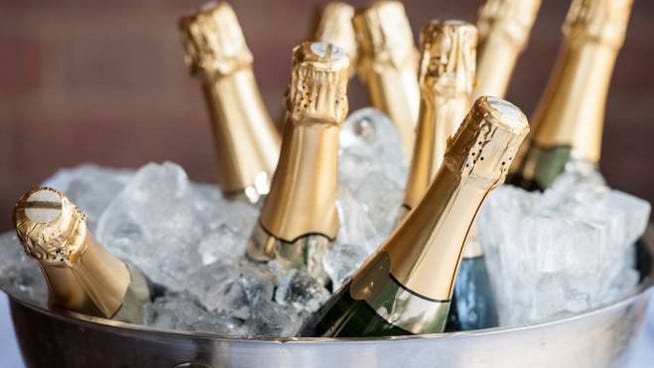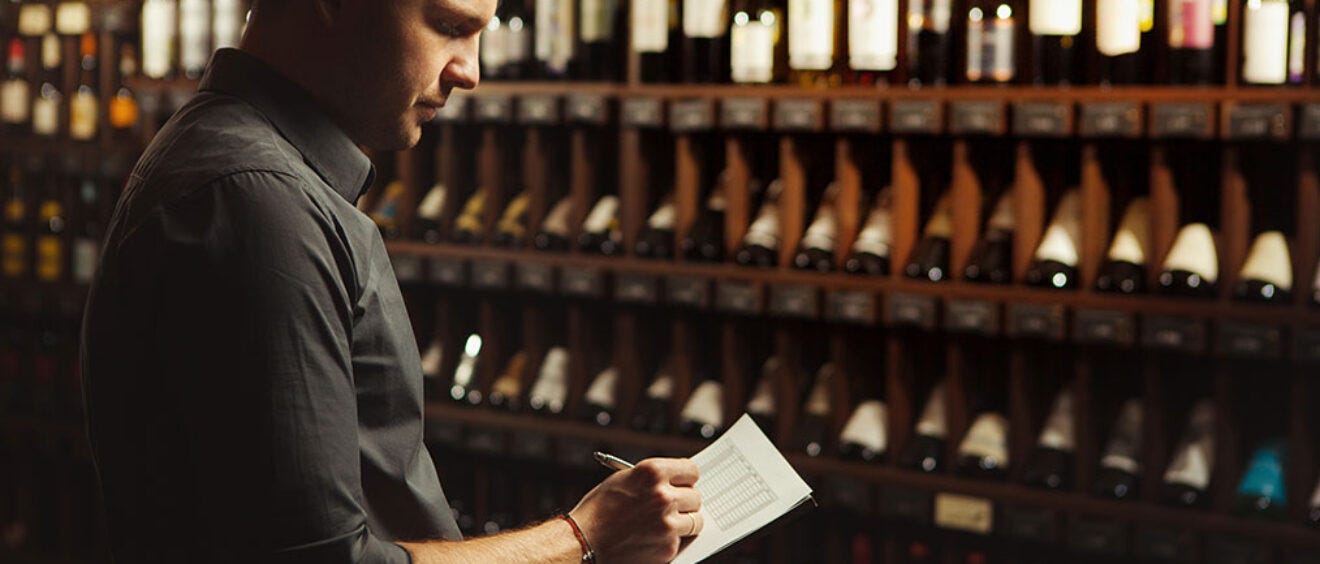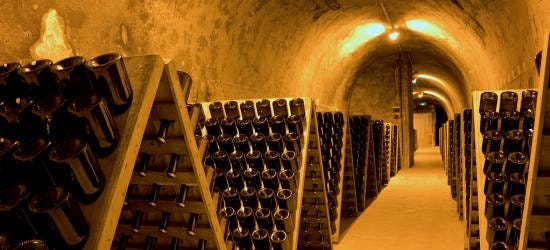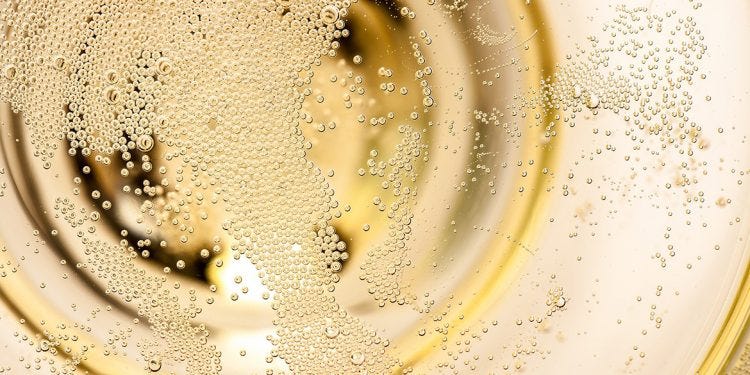Wine (checklist item n. 21 - part one)
Sparkling wine, how to choose.
The time has come to address the topic of "wine", already introduced a couple of Sundays ago, when I started discussing together the four items including "menu-wine-cake-cocktail".
In fact, each of these four topics deserves a discussion in itself, but since they are closely related and, indeed, complementary, I preferred to make a chapter, divided then into four paragraphs.
Wine is a very delicate subject: everyone thinks they know everything but, above all, they mistake current trends for great timeless truths. In fact, you don't need to be an expert to navigate the wine world and make choices that work for a wedding menu. It is always advisable to get advice, but you must be very careful, as often the advice has the goal of emptying the cellar, which must be periodically renewed. Therefore, it’s ok to listen to the catering company that you hired but, precisely in the choice of such company, the wine issue must also be considered.
As I said in the issue about the menu, the newlyweds should go do some menu tests to choose the most appropriate combination of dishes for their wedding: it is important that the menu test is accompanied by various choice options on the sequence of wines. But, above all, it is important that there is a real choice to make.
It seems trivial, but it’s not: it often happens (actually, always) that catering companies have relations with only one winery and therefore the choice ends up falling only on the wines supplied by that producer. So, it inevitably becomes a limited choice.
It is also true that, sometimes, having too much choice, you get lost. But at least some different options should be presented to the newlyweds.
So, all this said, if the newlyweds wish to have certain wines paired with the chosen menu and the various caterers say they do not have them (they often argue that those proposed by them are absolutely the best and definitely superior to those desired by the newlyweds) you should simply ask to get them.
Again, here there will be a clash because the caterers have warehouse stocks to finish but the newlyweds, who do not want to feel constrained into predefined choices, absolutely must make sure to have the wines supplied separately. It goes without saying that costs change, but I think it's worth it.
Let’s review what I wrote in the April 11 issue to deepen some fundamental points:
“Therefore, there will be sparkling wines at the beginning and at the end, and still wines paired with the courses. It begins with a fresh white wine to be paired with the first course (risotto), continuing with a structured white wine for the fish dish, then the sorbet (that goes alone), and finally a full-bodies red wine with the meat dish.
If the wedding takes place in a hot season, this last red wine will be of medium structure.
Then there will be a sparkling wine for the toast when the cake is cut: the same wine that will then be served at the table together with the cake.
With the final sweet delicacies, in general, a precious sweet wine such as, for example, a passito, is served.
There has been a long and articulated debate on the type of sparkling wine to serve with the cake: the rule is to serve a sweet sparkling wine but often a dry sparkling wine is preferable and this is more than understandable.
I’d love to elaborate on this topic because, as a Sommelier, I would like to argue in a more structured way in one of the next issues.”
Today we’ll start with sparkling wines.
Without giving a lesson on sparkling wines, I would like to define some simple, “firm” points.
Bubbles (that is, what distinguishes still wines from sparkling wines) are of two types: those that are formed inside the bottle itself and those that are formed in a large tank before the wine is bottled. The most prestigious wines have the former and I would like to favor the choice of a sparkling wine obtained with this method, which in France is called "Méthode Champenoise", and in Italy goes by the name of "Metodo Classico" (Classic Method).
In the case of a wedding in Italy, I would like to suggest the choice of a national sparkling wine and among the many, those from the Franciacorta area (Lombardy Region) and those from the Trento area (Trentino-Alto Adige Region) are definitely the best choice.
Within this type, there are more or less dry sparkling wines depending on the residual sugar and the processing in the cellar: the classification provides 6 different degrees of dryness/sweetness but I would like to focus on the three central ones. Therefore, without going into details of chemistry and enology, the sparkling wine that has the wording "Brut" on the label will be the most classic, the one that goes well with everything and everyone likes it. From here, the slightly drier sparkling wine is called extra-brut, and the slightly sweeter one is called extra dry. Here they are, with their most appropriate pairings:
• extra-brut: aperitif;
• brut: aperitif/meal;
• extra-dry: wedding cake.
Within these three categories then there are thousands of nuances that are determined by as many thousands of variables, a key one being the style of the winery/company: each winery has its own unmistakable imprint, which is determined by its territories, the exposure of the vineyards, etc, but most of all by the “hand” of the so-called chef de cave, who makes up the dosages to obtain the famous dryness/sweetness. What I just wrote is a brief explanation of a topic that could be disserted in treatises of thousands and thousands of pages; but I’d say that, in this context, this is enough: the newlyweds don’t need to know everything about perfect bubbles.
Back to the pairings with the courses, personally, I do not like to pair dessert with dessert (in this case, the wedding cake with sweet sparkling wine) even if, theoretically, this is the golden rule. I’d rather pair very dry sparkling wines, or at least dry, even with the cake.
Finally, let's not forget that the wedding banquet menu should be pleasant for everyone, as well as for the newlyweds, of course, so I think it would be appropriate to stick to sparkling wines of pleasant type, without seeking extreme exaggeration.
A couple of sparkling wines, one slightly drier for the aperitif and possibly for the appetizer and a slightly less dry one for the final part of the menu, will be the best choice: extra-brut and brut, to summarize.
The most suitable glasses for sparkling wines are the wide flute (watch out: the narrow and long flutes are now definitely outdated) for the dry ones and the cup for the sweet ones. Sometimes catering companies do not have glasses that meet all needs, so it is advisable to investigate well beforehand to get the desired glasses, so as to avoid any last-minute surprises.
I’ll stop here for today, but I will soon continue with the other wines (those without bubbles!), paired with the courses of the wedding menu.
Until next Sunday








